


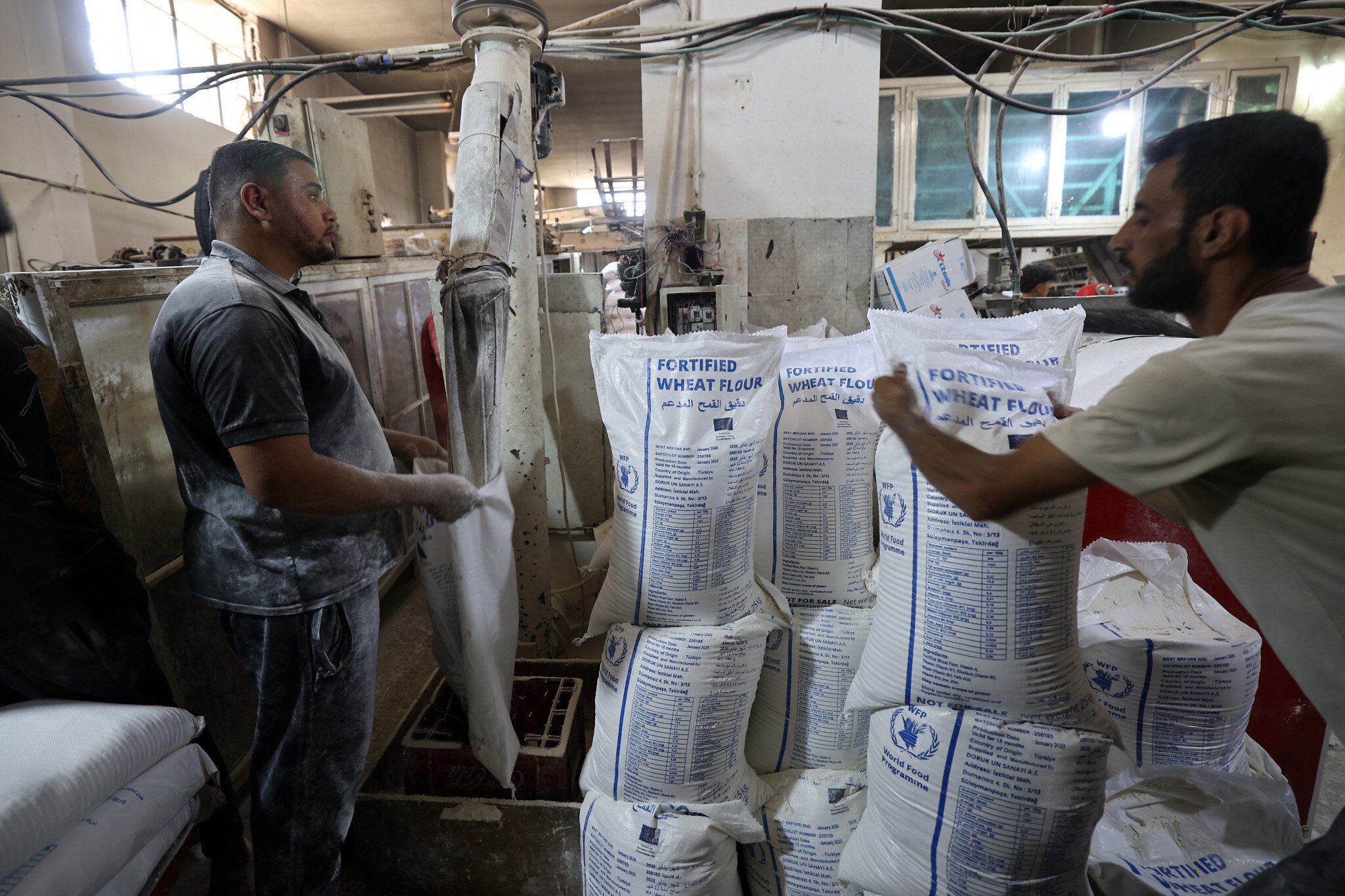
Flour and other food aid will start reaching some of Gaza’s most vulnerable people on Thursday, aid workers said, as the United Nations confirmed that aid groups “collected and dispatched” around 90 of some 200 trucks that Israel has allowed to enter this week, but Palestinian officials said it is nowhere near enough to make up for shortages caused by an 11-week blockade.
Israel allowed 100 trucks carrying baby food and medical equipment into the enclave on Wednesday, another 90 on Tuesday and five on Monday, after announcing its first relaxation of the restrictions under mounting international pressure.
Jens Laerke, spokesperson for the UN humanitarian agency OCHA, said the trucks that entered carried medicine, wheat flour and nutrition supplies.
Aid groups have faced significant challenges distributing the aid because of insecurity, the risk of looting and coordination issues with Israeli authorities, Laerke added.
Most of the supplies have been sitting on the Gaza side of the Kerem Shalom crossing with Israel, and the UN said Wednesday that the route offered to them by the IDF was not safe and that they feared looting, which was why the distribution was delayed.
Israel had blocked all aid from entering Gaza since March 2, arguing that sufficient humanitarian assistance had entered the Strip during a six-week ceasefire before that and that Hamas was stealing aid. It said the blockade was part of an effort to pressure the terror group to release the dozens of hostages it is still holding.
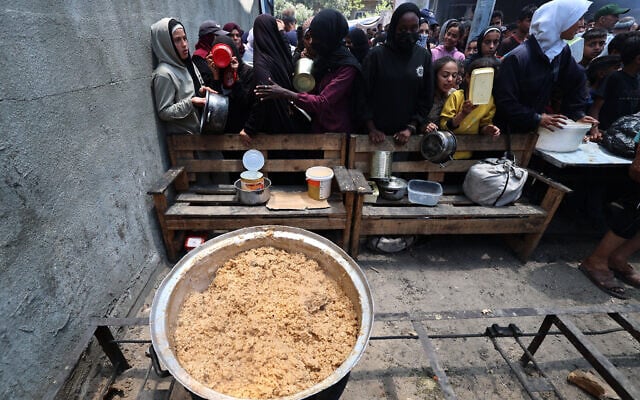
The UN has said a quarter of Gaza’s 2.3 million people were at risk of famine, and some officials in the IDF warned the political leadership that the enclave was on the brink of starvation.
“Some bakeries will begin receiving flour to produce bread, and we expect the distribution of bread to begin later today,” Amjad al-Shawa, director of the Palestinian Non-Governmental Organizations Network in Gaza, told Reuters.
He said just 90 trucks had gotten through so far. “During the ceasefire, 600 trucks used to enter every day, which means that the current quantity is a drop in the ocean, nothing,” he said.
Bakeries backed by the UN’s World Food Programme will produce the bread and the agency’s staff will hand it out — a more controlled system than previously, when bakers sold it directly to the public at a low cost, he added.
“The idea is to try and reach the most needy families, those who are desperate, as it is just the start,” Shawa said.
Umm Talal al-Masri, 53, a displaced Palestinian in Gaza City, described the situation as “unbearable.”
“No one is distributing anything to us. Everyone is waiting for aid, but we haven’t received anything,” she said. “We barely manage to prepare one meal a day.”
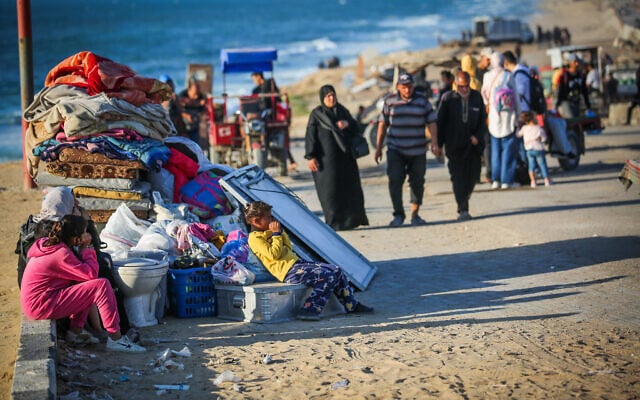
As the first aid arrived since the blockade, Israeli military strikes on Gaza killed at least 35 Palestinians across the enclave on Thursday, local Hamas-run health authorities said.
There was no immediate comment from the Israeli military on the reports. It has repeatedly said it targets terror infrastructure and operatives and seeks to avoid civilian casualties.
Midday Thursday, the IDF issued a wide evacuation warning for the northern Gaza Strip, as part of its new offensive against Hamas.
In a post on X, the IDF’s Arabic-language spokesman, Col. Avichay Adraee, called for Palestinians residing in Sheikh Zayed, Salatin, Beit Lahiya, Jabalia and nearby towns to evacuate south.
He warned that the IDF was operating “with great force” in these areas, and they were considered “dangerous combat zones.”
A similar warning for parts of northern Gaza was issued on Wednesday evening, in what the army said was a response to rocket fire.
It said that one “projectile that was identified crossing into Israel from the northern Gaza Strip was intercepted” by the air force. It later announced three more launches from northern Gaza, but said the projectiles had fallen inside the Palestinian territory.
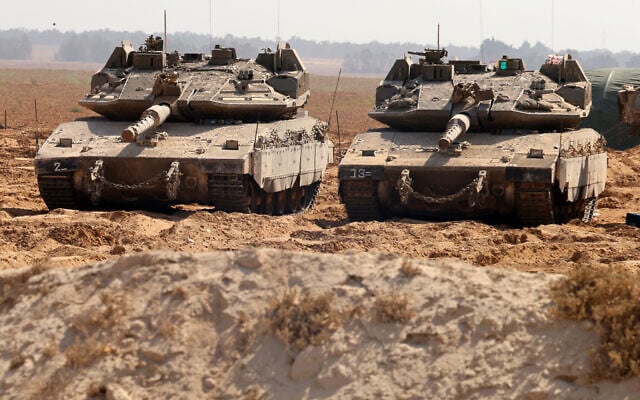
In Beit Lahiya on the northern edge of the enclave, a tank shell hit a medicine warehouse inside Al-Awda Hospital and set it ablaze, the Hamas health ministry said Thursday. Rescue workers tried to extinguish the fires for hours, it added.
Tanks were stationed outside the hospital, medics said, effectively blocking access to the facility.
The Gaza healthcare system has been barely functioning amid the war, with most of the medical facilities out of order.
The war in Gaza began when Hamas led the October 7, 2023, invasion of southern Israel, which killed some 1,200 people and saw 251 hostages taken to the Strip. Fifty-eight hostages remain in captivity, of whom at least 35 are dead, according to Israeli assessments.
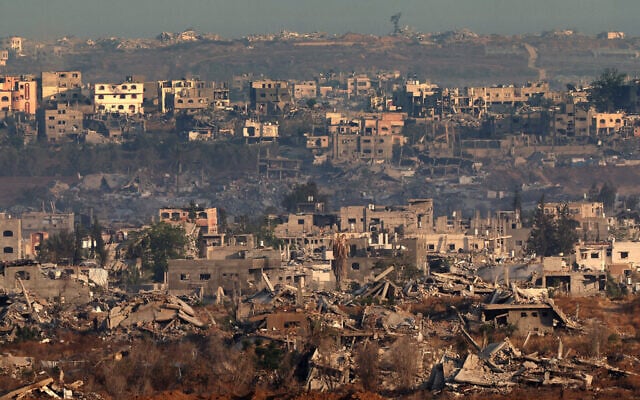
More than 53,000 people in the Strip have been killed or are presumed dead in the war, according to Gaza’s Hamas-run health ministry. That toll includes hundreds of Gazans killed in strikes since Israel initiated a fresh intensive operation last week.
The Hamas-run health ministry on Thursday published a list of 16,503 children and teenagers up to age 18 it claims were killed as a direct result of the war in Gaza, meaning as a result of gunfire and bombings.
The full list includes names, ID numbers, birth dates, and information on how the data on their deaths was collected — either from hospital casualty lists or updates provided by their families to the ministry.
There is no independent verification of the data. In the past, studies have pointed to inaccuracies and errors in the lists and figures published by the Hamas-controlled authorities in Gaza, which routinely don’t differentiate between combatants and civilians, and allegedly include some killed by misfired Palestinian rockets or from natural causes.
In addition, Hamas and other terror groups are known to regularly employ older teens as operatives.
